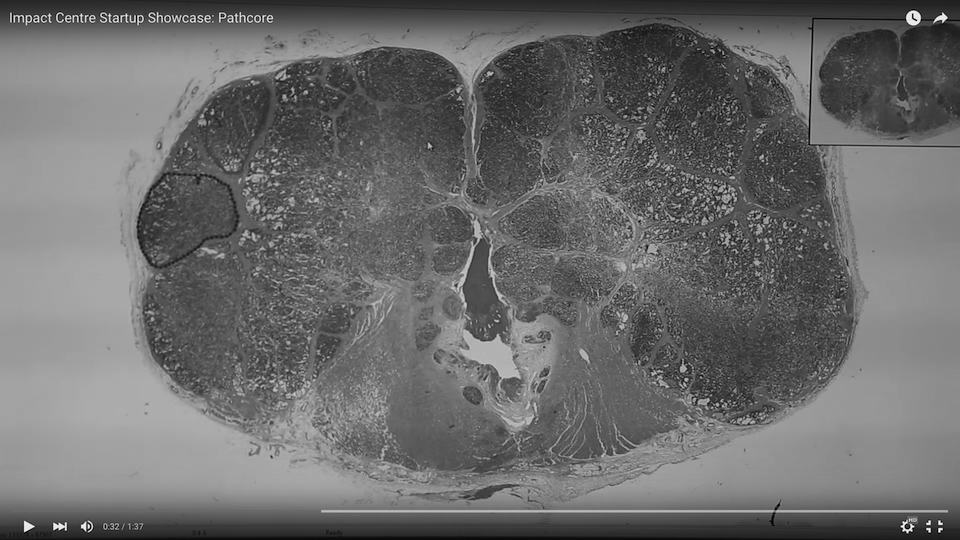Quick and accurate diagnosis is vital to effective treatment, anything that can make pathology more efficient might be a literal life-saver.
Pathcore, a start-up based at the University of Toronto’s Impact Centre, aids this process by employing the power of computerized quantitative methods to transform the field of pathology. Using algorithm-based image analysis, the start-up helps pathologists make diagnoses more accurately and more efficiently.
“Pathology is a very analogue field that still relies on microscopes and human interpretation to diagnose complex diseases,” says Dan Hosseinzadeh, CEO and co-founder of the start-up. “We feel that computers can assist the pathologists in certain routine, time consuming, and tedious tasks, thereby allowing the human pathologists to focus on the complex decision-making by synthesizing information from various sources into a diagnosis.”
The Sedeen Viewer, is one of Pathcore’s products that allows pathologists to annotate and analyze whole slide scans of tissue samples. Pathologists can then apply tissue- and disease-specific algorithms to the images to make clinical diagnoses.
Sean Nichols, Pathcore’s Lead Web Developer explains that, “for prostate cancer, you might have an algorithm that calculates what’s called the Gleason score, which is a scoring method for grading the aggressiveness of prostate cancer. In that case you might look across the whole image or select a few areas that are representative, and then run the algorithm on it.”
Pathcore has also developed assisted algorithms that automate repetitive tasks such as cell counting. “So right now pathologists would look at an area and say there’s about 200 cells, whereas an algorithm could tell you exactly how many it detects,” says Nichols.
“The main challenge is coping with the vast amount of information available when specimens are imaged at high resolution… Also understanding the complex nature of the disease process is challenging and important for building good algorithms,” says Hosseinzadeh.
Pathcore’s technology is currently being used by over 100 organizations around the world. The $4 million (CAD) investment from the US’ National Cancer Institute will accelerate algorithm development for cancer detection. This investment will allow the company to expand its Software Development Kit to support its partner institutions as they build their own algorithms.
Additionally, the company is “hoping to improve on the usability of the [Sedeen Viewer] and potentially hire some more developers to improve the software,” says Deyu Wang, product designer at Pathcore.
The start-up is a spin-off from a research project originally supported by the Ontario Institute for Cancer Research and the Sunnybrook Research Institute.
The Impact Centre nurtures early stage start-ups by providing a range of services, including marketing, consulting, and legal support. It also provides a physical space for start-ups at little or no cost. Nichols explains that the Impact Centre “puts all these start-ups in an environment together to kind of interact with each other and give each other advice.”
U of T students interested in working at a start-up should enroll in IMC200 (Innovation and Entrepreneurship) and IMC390 (Internships in New Ventures). The latter allows students to complete a placement at an Impact Centre Company.
The three characteristics of a successful start-up, Hosseinzadeh argues are, “a dedicated and hardworking team, a niche product, [and] a strong network.”


